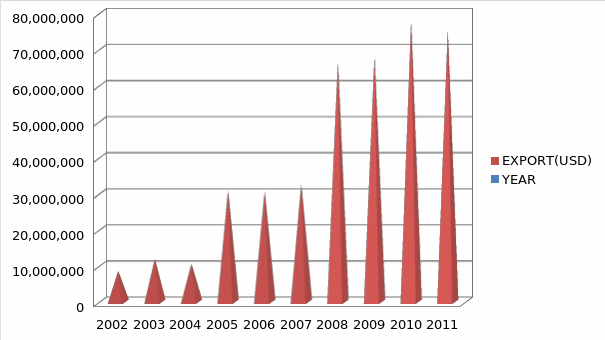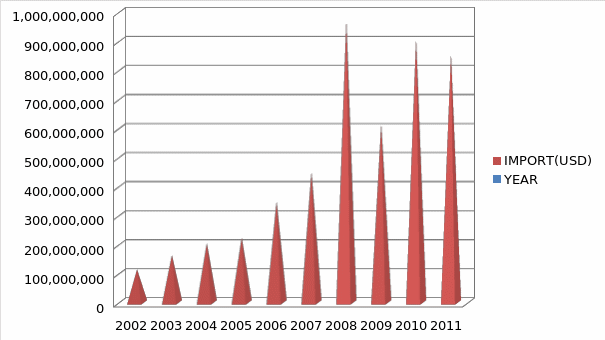Abstract
Globalization has enabled nations from different parts of the world to interact and share ideas that help them to develop. The increase in the number of trade fairs and exhibitions (regional and international) shows the importance of these activities in improving the activities of various sectors. Africa, India, and Oman have a trade fair event organized by Growth Exhibitions that collects information regarding various sectors from different stakeholders. The organizers connect Africa, India, and the United Arab Emirates region in a bid to promote economic and social progress in these regions. The trade fairs and exhibitions organized help these regions to utilize their resources, share experiences and identify ways of promoting business within the cluster. Moreover, these events help locals to invest in economic activities that promote trade within these regions.
Grow Exhibitions
Outline
Modern technology and the Westernisation of social, economic, and political activities have promoted interactions between nations. Today, almost all nations have connections in different sectors. Globalization has facilitated the success of business activities and encouraged nations to invest in foreign lands. Nations have different resources, traditions, and abilities and they cannot produce everything they need. Therefore, they need to export their surplus and import what they cannot produce. Trade fairs and exhibitions have become popular platforms to promote the popularity of business activities, share ideas and create room for local and foreign investors (Rydell, 2012). This discussion examines the nature, impacts, and value improvement plans of the Africa, India, and Oman Trade Fair and its role in facilitating trade activities amongst members.
The Africa, India, and Oman Trade Fair
Members of this trade fair include African, Indian, and Oman countries that came together and established this even in the late 1990s. However, the activities of this event were not known because of the low volume of trade between its members. African, Indian, and Oman countries started to be active in this fair towards the end of 2002. Today, most countries located in these regions are members of this fair due to the benefits enjoyed by its founders. The event brings together more than 30 countries that showcase their economic and social activities. Members of this cluster participate come from different social and economic backgrounds and this creates a healthy business environment (Mataen, 2012). The purpose of offering this fair was to promote trade activities between these nations. Africa, India, and the United Arab Emirates are endowed with different economic resources and it was prudent to create room for showcasing them to promote trade. For instance, most African countries are endowed with minerals and agricultural resources while the United Arab Emirates has numerous petroleum deposits (Mataen, 2012). Therefore, African countries produce food and other agricultural products that get ready market in the United Arab Emirates while it imports petroleum from this region. On the other hand, these regions share equal resources when it comes to tourism. Africa has national and game parks and its beautiful climate and scenes attract tourists from different parts of the world.
Impact of the Cluster
The cluster has offered various opportunities for business expansion for both locals and foreigners. First, the event is organized by Growth Exhibitions that prepares its calendar and informs members about the upcoming events (Grow Exhibitions, 2015). A unique aspect of this fair is that it brings together players from different sectors including education, tourism, transport, mining, and culture amongst other issues. The event provides a ready market for goods and services produced by members. For instance, the last fair was organized in Kenya in 2013 and brought together investors from different parts of the world. The organizers do not restrict the number of interested parties regardless of whether they are members or not (Poesch, 2014). However, the event cannot be organized in regions that do not have members. Kenya showcased its resources and opportunities to investors and clients from different parts of the world. The event promoted tourism and led to the signing of the Dubai-Kenya Tourism agreement that lessened the travel documentation process that discouraged tourists from traveling to Kenya (Grow Exhibitions, 2015).
Secondly, the program generated income for the Kenyan government and local investors. Trade fairs are events that create room for investors to sell their goods or services through advertising them to potential clients (Levinson, 2010). The advantage of these fairs is that the host country enjoys more than others during the event because it has adequate time and space to organize and promote its economic activities (Grow Exhibitions, 2015). Trade fairs offer investors the opportunities to advertise their products and sell them to customers. All participants pay registration fees which benefit the event organizers and their bodies. Countries that organize these fairs and perused most members to attend are likely to benefit more than those that do not take them seriously. In addition, not all countries can organize these fairs; therefore, some members will have more chances of hosting them and this means that they benefit more than others. The table below shows the annual average volume of imports and exports between the United Arab Emirates and Africa (Grow Exhibitions, 2015).
Thirdly, these fairs promote specialization and ensure there is less competition in the market of members’ services or goods (Greenhalgh, 2011). Most African countries rely on agriculture as their chief export and thus they produce similar goods. However, this fair helped them to realize that they can specialize in the production of some products and ensure they offer high quality to attract customers. For instance, Kenya specializes in the growth of coffee, tea, and maize and has a ready market for its products in the fairs organized in the region (Grow Exhibitions, 2015). Uganda produces more bananas than other countries and thus has higher chances of getting good value for its products. South Africa, Kenya, and Tanzania share almost equal benefits when it comes to tourism because they have similar tourist attraction sites. On the other hand, most countries in the United Arab Emirates enjoy a non-interrupted supply of crude oil in Africa. The trade fair promotes the popularity of this product by signing agreements that allow the importation of second-hand vehicles by African countries (Poesch, 2014). The graphs below show trade volumes (exports and imports respectively) between Ethiopia and the United Arab Emirates between 2002 and 2011(Grow Exhibitions, 2015).


Lastly, the trade fair promotes investments in the technology sector due to the expected expansion of trade activities (Greenhalgh, 2011). Most African and Asian countries are developing their infrastructure and other sectors of the economy. In addition, they invested heavily in education, transport and communications, and other sectors that facilitate trade. The demand for modern technology has always been an important aspect of this bloc. Moreover, technology is a catalyst that spurs development and ensures countries gain competitive advantages and sell more while spending less. The high demand for modern technology has pushed these members to seek economic partnerships with China and Japan to ensure they are not left out of the benefits of globalization (Grow Exhibitions, 2015). Members of this fair can freely import technology at cheaper costs and invest in developing it with the assistance of other partners.
Value Improvement
The challenges facing this trade fair have never been addressed adequately and this means that its success may be hampered by perennial problems. There is stiff competition for African resources by the west and eastern countries. America and China are in a cut-throat competition to prove their dominance in Africa. Therefore, most African countries are in a dilemma and do not know which country should be given priority. The success of the fairs organized in Africa depends on the nature and historical background of the hosts. For instance, some countries like South Africa do not wish to show opposition and defiance to western countries. On the other hand, countries like Zimbabwe and Uganda do not care what western countries think about them. The ever-increasing enmity between China and America has forced some members of this bloc to violate their trade agreements to show loyalty to their masters. The organizers of this fair should open registration for new members from other regions. Africa, Asia, and the United Arab Emirates cannot meet their needs if they do not allow some western countries to join this block. These regions should stop focussing on the political differences and supremacy battles between China and America.
Conclusion
The formation of the Africa, India, and Oman trade fair was a wise move to help their member countries improve their economies by boosting business activities between them. These regions have different resources and thus it was necessary to ensure they get a ready market for their surplus and import what they cannot produce. The cluster advertises the activities of member countries and ensures their popularity in known. In addition, it creates room for members to exhibit their resources and abilities to ensure they attract investors and boost local businesses. The event managers can improve the value provided to the local investors and regional clusters by focussing on registering new members with unique exhibitions rather than locking out potential investors due to political reasons.
References
Greenhalgh, P. (2011). Fair World: A History of World’s Fairs and Expositions from London to Shanghai 1851-2010. New York: Wiley.
Grow Exhibitions. Grow Exhibitions: Major Annual Trade Exhibitions Organized/ Marketed by Grow Exhibitions. (2015). Web.
Levinson, C. (2010). Guerrilla Trade Show Selling: New Unconventional Weapons and Tactics to Meet More People, Get More Leads, and Close More Sales. New Jersey: Prentice Hall.
Mataen, D. (2012). Africa – The Ultimate Frontier Market: A Guide to the Business and Investment Opportunities in Emerging Africa. London: Harriman House.
Poesch, J. (2014). Trade Fair Design Annual 2014/2015. New York: McGraw-Hill.
Rydell, R. W. (2012). All the World’s a Fair: Visions of Empire at American International Expositions. Chicago: University of Chicago Press.